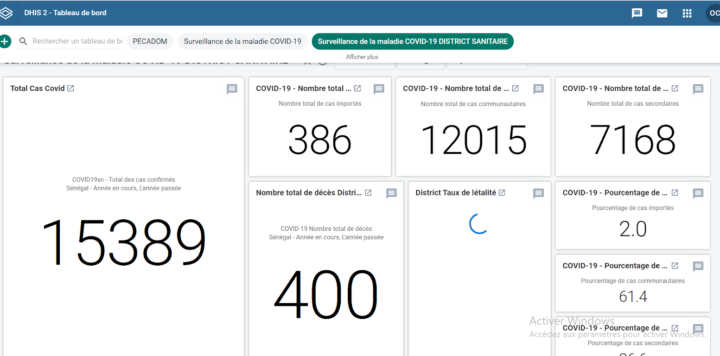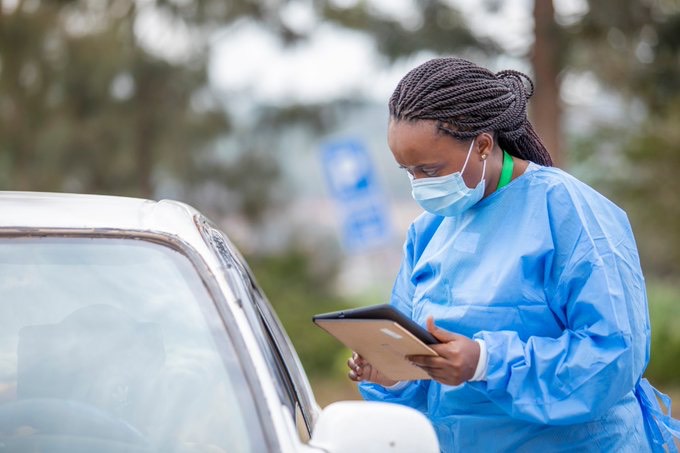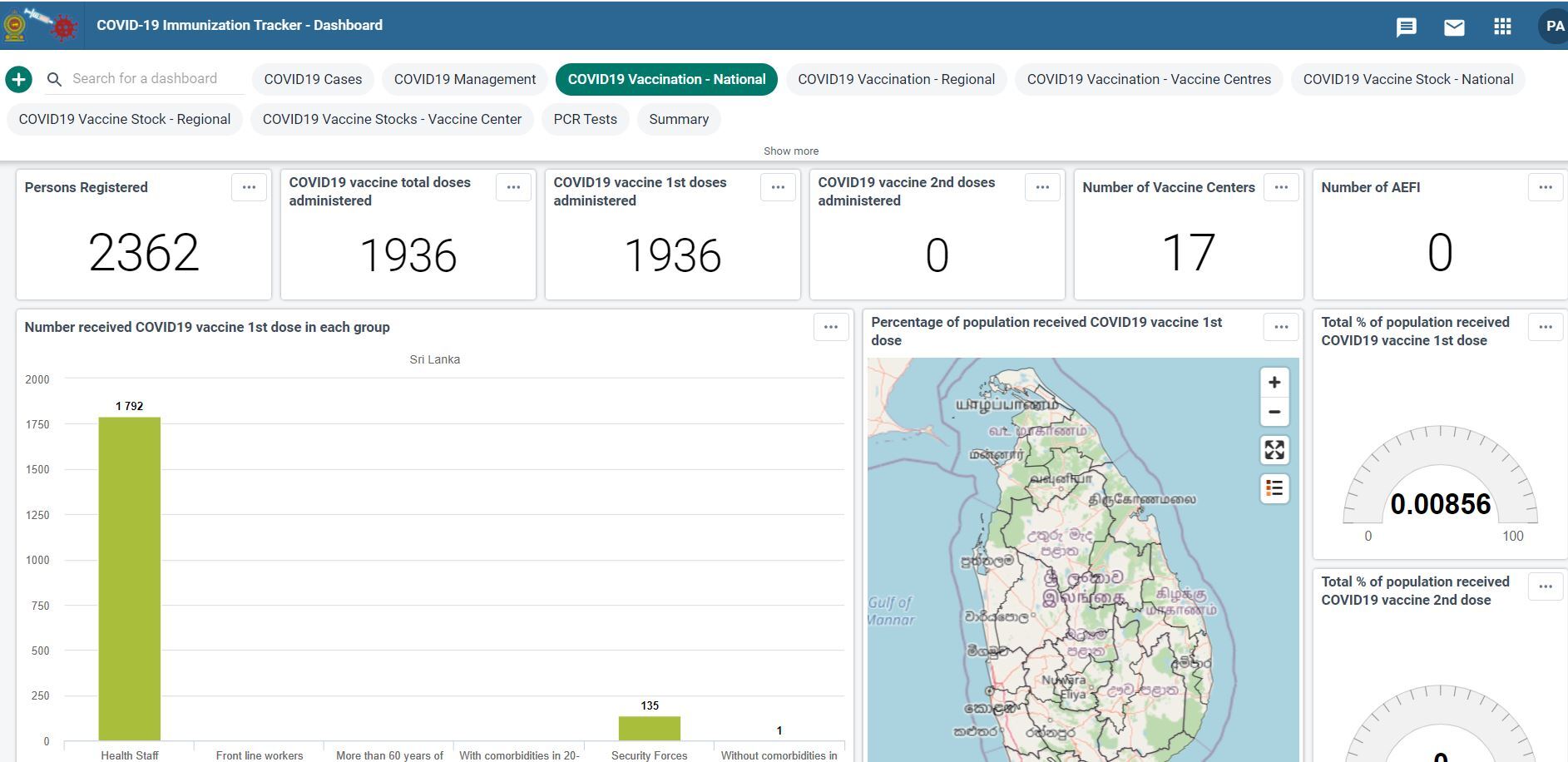Harmonizing data collection for COVID-19 response in Senegal
Years of experience with DHIS2 provided the foundation for an effective response to COVID-19
Senegal started the process of implementing the DHIS2 platform in 2013. Deployment took place over several stages in 2014, and the transition to the national level was carried out between 2015 and 2016. The platform is now used at all levels of the health pyramid (public health establishments, health centers and health posts) for coordination, supervision, data entry and analysis. All health programs in Senegal use DHIS2 as a single source for collecting aggregate data. Tracker is also configured to collect individual data from HIV-positive patients. In addition, Tuberculosis and epidemiological surveillance components are being implemented.
At the end of February 2020, the first case of COVID-19 was recorded in West Africa. Within a month, the virus spread to all 17 countries in the region. In Senegal, which detected its first case in West Dakar on March 2, 2020, the challenges facing the pandemic were health-related, economic and political. An exponential rise in COVID-19 cases would hamper government functions due to the risk of overloading hospitals, declining tax revenues and increasing unemployment and poverty rates.

An operational system in 6 days thanks to the synergy of expertise
A state of emergency was quickly declared, and Senegal was one of the first countries in West Africa to use DHIS2 Tracker for both the follow-up of COVID-19 cases and contact tracing. A technical team made up of IT from the DHIS2 Task Force, the Health Emergency Operations Center (COUS), the IT Unit, and the NGO PATH was set up. Their aim was to organize the country’s response to COVID-19. COUS, which was responsible for leading operations to prevent the spread of the pandemic at the national level, played a key role in the response to COVID-19. The NGO PATH, also contributed significantly to improving the performance of the health information system by providing technical and financial assistance.
These organizations all joined forces in order to implement the DHIS2 COVID-19 package for the collection and analysis of COVID-19 case data using DHIS2. HISP WCA also provided support in importing data from positive cases. A unique identifier was assigned to each case to avoid duplication.
In a record time of 6 days, the DHIS2 Task Force and their various partners proceeded to:
- Install the DHIS2 package for COVID-19 case monitoring and contact management.
- Adapt the package to the local context through the creation of input forms within the districts.
- Implement forms for data collection.
- Develop user manuals and establish training modules.
Training district and regional management teams in Tracker for better harmonization in data collection and real-time analysis
The other central component of this implementation has been the online training of central-level and management teams in 79 districts and 14 regions in the use of the COVID-19 package. This training was also accompanied by a second phase of post-training supervision and elimination of input gaps for the same teams.
Once the design of the DHIS2 Tracker for COVID-19 was launched, Senegal was faced with a few challenges, including the lack of experience of the team in charge — who had not been able to benefit beforehand from training on Tracker — the unique coding (at the district level) of COVID patients, as well as inconsistencies arising from the import of all COVID-19 data that was recorded by various means before the implementation of the Tracker.
However, this implementation allowed the centralization of all COVID-19 case data and greatly facilitated the monitoring and analysis of the data. It is now possible to have an overview of the progress of the pandemic thanks to real-time analysis, statistics and indicators such as the number of confirmed cases, the number of imported cases, the number of deaths, the case fatality rate, and the number of secondary cases, among others.
While these statistical data support the implementation of effective policies to fight the pandemic, data quality remains at the heart of the concerns and actions of key stakeholders. As a result, a comparison between the data entered on paper and those recorded in the Tracker program is carried out continuously.
COVID-19 Tracker deployment spurs future disease surveillance strategies
Based on this experience, the Ministry of Health and Social Action is already looking at next steps:
- Developing, in agreement with all stakeholders, strategies such as the systematic import of the data entered in the treatment centers (CTE) and the arrangement of workshops to reduce gaps and validate data entry. This will allow the integration in real time of all COVID-19 cases in the DHIS2 database.
- Guarantee reliable monitoring of data and projections through Tracker and relevant analysis tools by improving dashboards and strengthening the knowledge of these tools by the teams responsible for them.
- Boost the program to facilitate the integration of unforeseen requests from the health authorities, such as was the case with the integration of monitoring of patients at home and suspected case data.
- Make the Tracker the main tool for monitoring notifiable diseases, including Measles, Yellow Fever, Meningitis, Whooping cough, Ebola, Dengue, other hemorrhagic fevers, AFP, Neonatal Tetanus, Cholera, Diarrhea and AEFI.
The use of the Tracker for the response against COVID-19 in Senegal is a concrete example demonstrating how DHIS2 can be deployed in a new local context in order to respond to new health challenges. The DHIS2 team at the University of Oslo and the HISP network continue to actively work on the COVID-19 response, with a core strategy of strengthening national health systems with the aim of maintaining and increasing local and regional expertise needed in the face of current and future health challenges.
Questions or comments about Senegal’s work with DHIS2 for COVID-19 response? Join the discussion on the Community of Practice.


